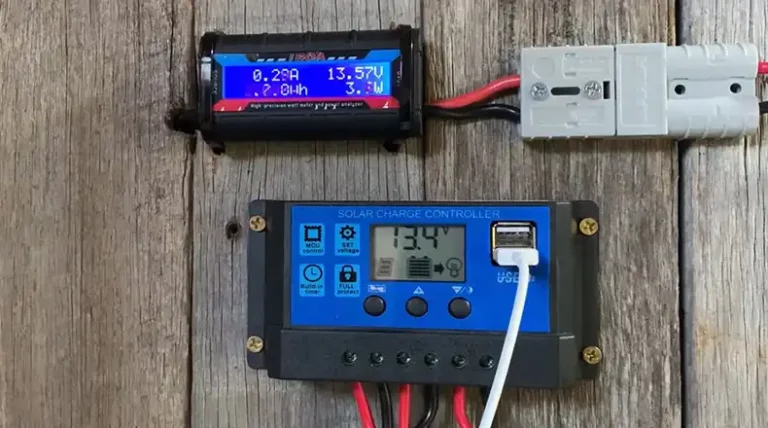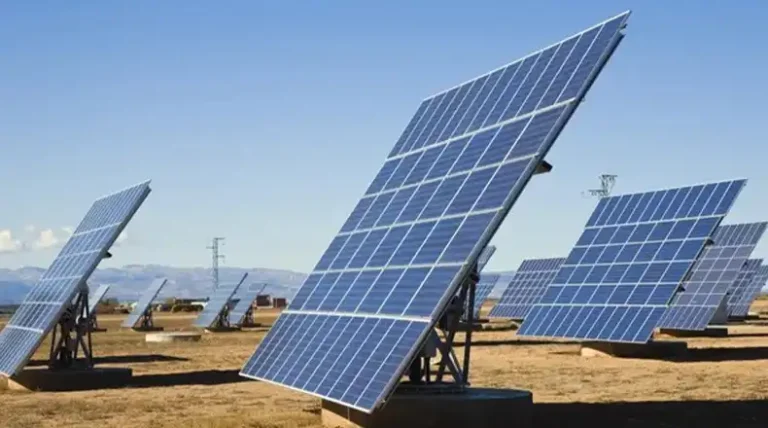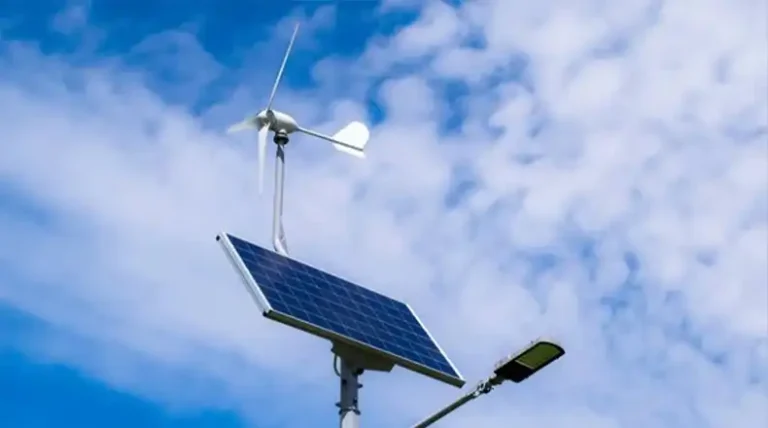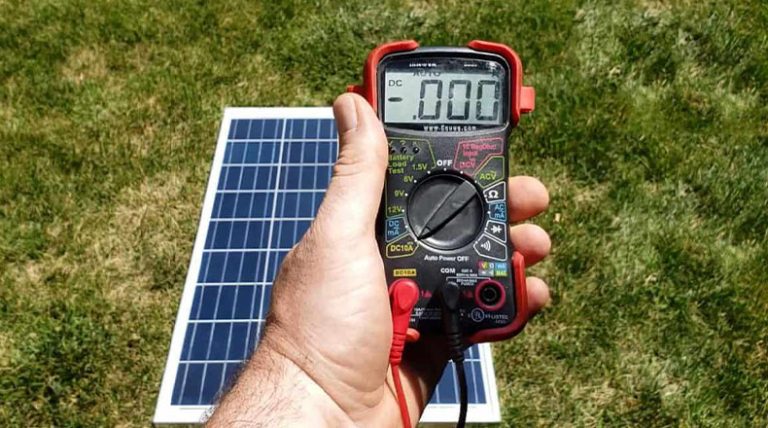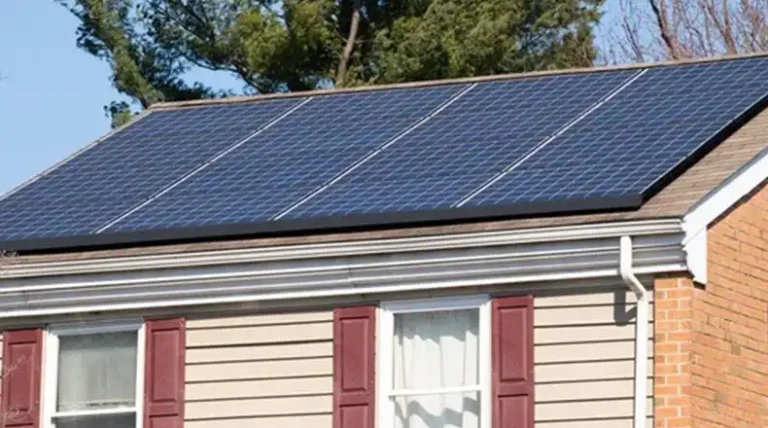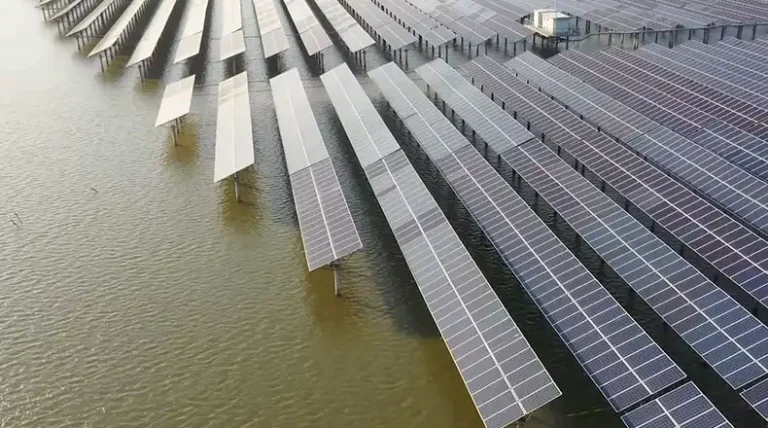Solar Companies in the USA | Everything You Need to Know
The solar industry in the United States has seen exponential growth over the last decade. Installations of solar panels in homes and businesses have increased more than 10-fold from 2010 to 2024 as prices dropped dramatically. There are now over 300,000 people employed in solar jobs across the country including leading national installers like Tesla, SunRun, and Vivint; But with so many options, how do you choose the right solar company to partner with on a solar installation?
In this article, I have provided a detailed overview of the solar industry landscape, top solar companies operating nationally and regionally, what to look for when evaluating installers, incentives, and prices, and the future outlook for solar energy in America.

Top Solar Companies in the USA
The US solar industry has seen massive growth, with over 107 gigawatts (GW) of solar energy now installed nationwide – enough to power 20 million homes! Originally, local installers dominated the market. But maturing technology and improving scale have allowed large national providers to offer competitively priced solar panel systems almost anywhere in the country. These nationwide solar companies have thousands of installers operating state-by-state, leveraging bulk purchases of equipment to reduce costs.
Largest National Solar Companies
Now that we’ve laid the groundwork, let’s shine a spotlight on some of the leading solar companies making waves in the USA:
- SolarCity (Now Tesla Solar)
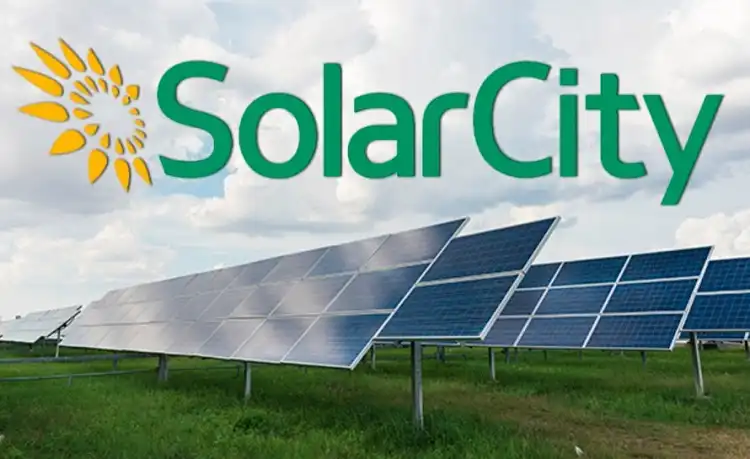
Yes, the electric vehicle maker also provides solar services after acquiring SolarCity in 2016. Tesla Solar Roof integrates solar tiles with Powerwall batteries. Tesla’s foray into solar energy has redefined the game. With a focus on sleek solar panels and integrated energy solutions, Tesla Solar has become a household name for those seeking cutting-edge technology and aesthetic appeal.
- SunPower
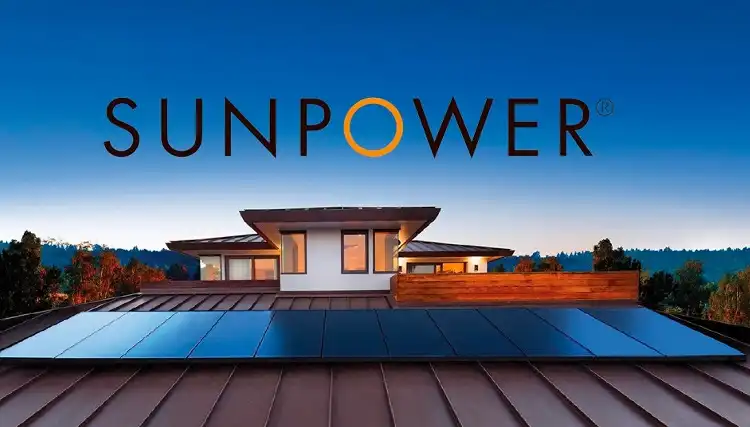
Renowned for its high-efficiency solar panels, SunPower stands tall in the solar industry. The company’s commitment to sustainability and innovation has earned it a solid reputation among residential and commercial customers alike.
- Vivint Solar
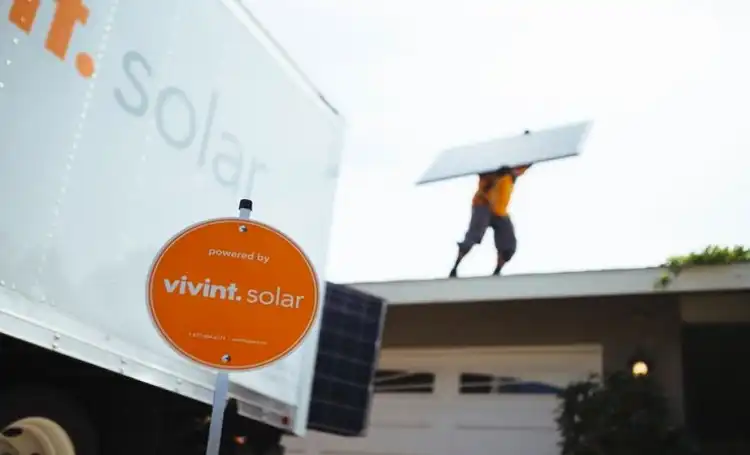
Vivint Solar combines smart home technology with solar solutions, offering a holistic approach to energy management. With a user-friendly interface and top-notch customer service, Vivint Solar has carved a niche in the residential solar market. It is a publicly traded company acquiring and servicing solar customers across 22 states and D.C.
- Sunrun
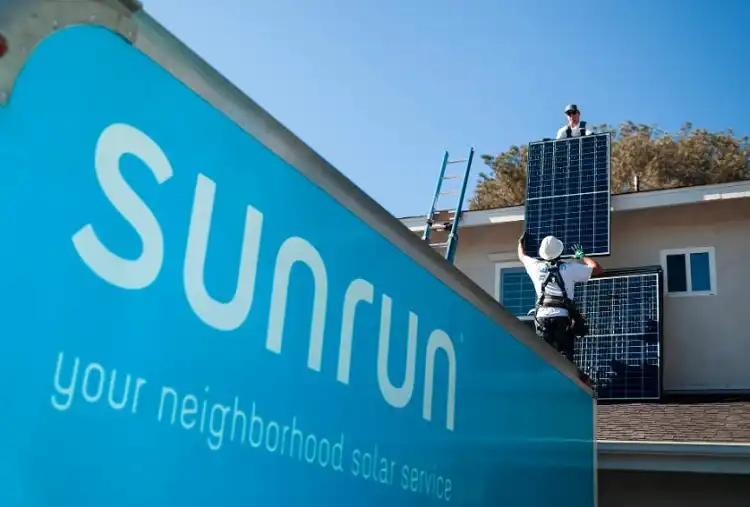
As a pioneer in the solar-as-a-service model, Sunrun offers hassle-free solar solutions. Their focus on affordability, combined with flexible financing options, has made solar adoption a reality for many American households. It is the largest residential solar company in the US, available in 22 states. Sunrun handles everything from custom design to financing to 20-year maintenance.
- Canadian Solar
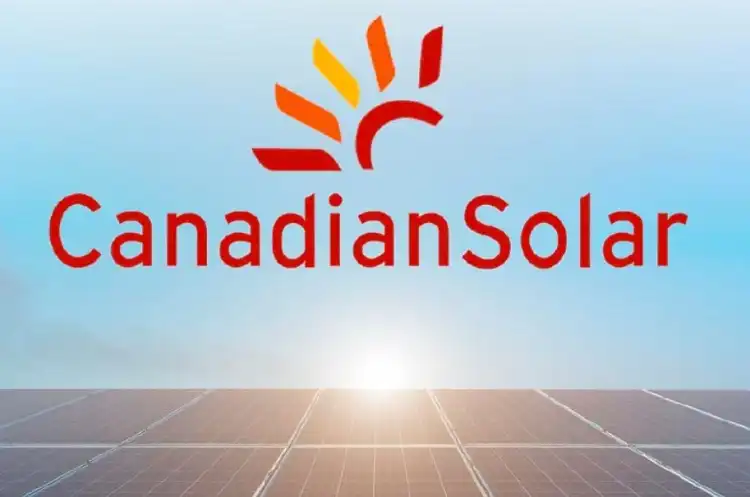
Despite its name, Canadian Solar has a significant presence in the USA. Known for its diverse range of solar products and global footprint, the company caters to both residential and commercial clients, emphasizing reliability and sustainability.
While large national companies can provide economies of scale, dozens of reputable regional solar installers excel in individual states closer to home.
List of Leading Solar Companies in the USA
Here is a table of the other top solar companies in the USA with details on pricing, features, services, ratings, and more:
| Company Name | Headquarter Location | Contact Number | Revenue | Number of Employees |
| Tesla | 1 Tesla Road, Austin, Texas, 78725 | +1 512 5168177 | $81.5B (2022) | 127,855 |
| Sunrun | 225 Bush St Ste 1400, San Francisco, California, 94104-4249 | +1 415 5806900 | $2.32B (2022) | 12,408 |
| Vivint Solar | 1800 W Ashton Blvd, Lehi, Utah, 84043-5490 | +1 801 3779111 | $1.6B (2021) | 1,200 |
| SunPower | 1414 Harbour Way South, Suite 1901, Richmond, California, 94804 | +1 408 2405500 | $1.7B (2022) | 4,710 |
| Berkshire Hathaway Energy Co | 666 Grand Avenue, Des Moines, Iowa, 50306-0657 | +1 515 242 3022 | $26.3B (2022) | 24,000 |
| First Solar Inc | 350 West Washington Street, Suite 600, Tempe, Arizona, 85288 | +1 602 4149300 | $2.6B (2022) | 5,500 |
| Florida Power & Light Co | 700 Universe Boulevard, Juno Beach, Florida, 33408 | +1 561 6944000 | $17.3B (2022) | 9,300 |
| Southern California Edison Co | P.O. Box 800, 2244 Walnut Grove Avenue, Rosemead, California, 91770 | +1 636 3021212 | $17.2B (2022) | 12,715 |
| Caterpillar Inc | Suite 100, 5205 N. O’Connor Boulevard, Irving, Texas, 75039 | +1 972 8917700 | $59.4B (2022) | 109,100 |
| Duke Energy Corp | 422 S Church St, Charlotte, North Carolina, 28242 | +1 704 3823853 | $28.8B (2022) | 27,859 |
| NRG Energy Inc | 910 Louisiana Street, Houston, Texas, 77002 | +1 713 5373000 | $31.5B (2022) | 6,603 |
| Vistra Corp | 6555 Sierra Dr, Irving, Texas, 75039 | +1 214 8124600 | $13.7B (2022) | 4,910 |
| Georgia Power Co | 241 Ralph Mcgill Blvd NE, Atlanta, Georgia, 30308 | +1 404 5066526 | $11.6B (2022) | 6,600 |
| Tennessee Valley Authority | 400 West Summit Hill Dr., Knoxville, Tennessee, 37902 | +1 865 6322101 | $12.5B (2022) | 10,390 |
| Edison International | 2244 Walnut Grove Ave, Po Box 800, Rosemead, California, 91770 | +1 626 3022222 | $17.2B (2022) | 13,388 |
| CenterPoint Energy Inc | P.O. Box 1700, Houston, Texas, 77251-1700 | +1 713 2071111 | $9.3B (2022) | 8,986 |
Key Considerations Choosing a Solar Company
With energy bills representing up to 15% of household costs, converting sunlight into electricity through solar panels on your roof continues to pencil out economically for millions of building owners across America. However, this long-term investment requires due diligence in choosing the right solar partner.
What to Look For In A Solar Installer
- Experience – How long has the company operated in your state?
- Reviews – Online ratings and actual customer testimonials
- Custom Design – Property measurements for optimized solar plans
- Panel Efficiency – Balance performance with premium pricing
- Reliable Equipment – High-quality solar panels (like LG, Panasonic) with 25+ year warranty
- Workmanship Warranty – Defect repairs for 10-20 years
- Financial Stability – Solar loans paid over decades need healthy installer
- Price Transparency – Detailed bid breakdown from start to finish
- Electricity Savings – Bill reduction projections based on system size
- Incentives – Federal tax credit facilitation, state/local rebates
- Grid Connection Approval – Smooth processing with electric utility
- Project Handling – Single company accountability from sale to install
Rather than focus only on the lowest bid, emphasize overall value from a reliable, experienced solar provider using high-quality equipment. Be sure to ask the sales rep critical questions on company history, number of installs locally, typical system specs, and output details.
Costs: Pricing To Go Solar
The most common question homeowners ask is: How much do solar panels cost? Unfortunately, there is no universal price per watt because size requirements vary considerably based on location and average sun exposure. Meanwhile, equipment costs, region-specific labor rates, and permitting fees demonstrate wide ranges. However, a deeper understanding of the major price components helps set expectations on what to pay for solar panel systems from leading national and local providers.
Average Costs – Residential Solar Panels
- Purchase price range: $2.50-$4 per watt
- Total install price range: $15,000 – $35,000
Cost Breakdown
- Equipment – 60%
- Installation Labor – 20%
- Permitting & Inspection – 10%
- Overhead & Margins – 10%
Assumptions
- System size: 6 kilowatts (kW)
- Panel wattage: 330 watts each * 18 panels = 6 kW
- Annual production: 8,200 kWh
The EIA estimates an average-sized 6 kW system runs $18,000 before incentives—however, one recent report showed U.S. homeowners paid $2.80 per watt on average including incentives.
For context, the U.S. Department of Energy (DOE) tallied cumulative costs for residential solar PV systems in Q1 2022. Nationwide the total install price stood at $2.44 per watt. This means a typical 6 kW system would run about $14,600 in total.
- $14,600 / 6 kW = $2.44 per watt
You’ll commonly see costs reported as dollars per watt ($/W) in solar proposals. This allows easy comparison across different system sizes.
Location impacts pricing significantly as well based on equipment needs and labor rates:
- California – $15,000 to $35,000+
- Texas – $12,000 to $24,000
- Mid-Atlantic – $11,000 to $28,000
- Northeast – $15,000 to $28,000
- Midwest – $11,000 to $23,000
Now, does going solar require that much cash upfront to break ground? Read on to understand the incentives making solar drastically more affordable.
Incentives Lower Costs by Up to 75%
The boom in residential solar adoption nationally comes primarily from better economics as equipment prices dropped 90% since 2010 while financing improved access through $0 down leases and power purchase agreements (PPAs) paid through electricity savings. However, massive incentives at both federal and state levels also let homeowners upgrade to solar at a fraction of the sticker price.
The single largest incentive comes via a 26% Federal Solar Tax Credit applied toward the total system cost of new installs. On a typical 6 kW system running $18,000, this equates to roughly $4,680 off for going solar. Even more impactful, many states offer seriously juicy rebates that chop 50-75% or more off solar panel costs for residents. Plus most utilities provide net metering payments at the retail electricity rate.
Combined Incentives Slash Real Costs to Under $5/Watt
- Purchase Price – $18,000 for 6 kW
- Federal Tax Credit (26%) – $4,680
- State/Local Rebates – $5,000
- Net Cost – $8,320
- Net $/Watt – $1.39/Watt
This means incentives reduced the out-of-pocket costs by over 50% in this example!
And don’t forget, politicians talk frequently about expanding clean energy tax breaks and climate-focused rebates, so future opportunities may sweeten the deal even more.
Check the DSIRE database for your exact state, county, and municipal incentive programs to understand what lower pricing or extra savings solar could deliver in your area.
Payback Period: Solar Return on Investment
“How many years until solar pays off?” represents the major financial question homeowners want answered before committing to a 20+ year relationship with residential solar panels.
This payback timeline hinges on four factors:
Solar Payback Period Factors
- Electricity bill savings
- Net costs after rebates & credits
- Local utility electricity rates
- Solar array productivity by location
Given so many variables, payback timeframes for solar investments understandably demonstrate high regional variance:
Average Payback Period by Region
- Southwest – 4 to 8 years
- Southeast – 6 to 12 years
- Northeast – 4 to 8 years
- Midwest – 5 to 15 years
- Northwest – 6 to 9 years
While the national average stands at 6 to 12 years currently, technology improvements, incentive additions, and rising retail electricity rates skew towards quicker paybacks moving forward. Plus, most solar loans run for 10 to 20 years anyway.
So after you hit the break-even timeline, 100% of ongoing utility savings from the sun drops straight to your bottom line for another decade plus. This delivers considerable compound investment gains from solar panel systems over their 25+ year lifespan.
And don’t forget, going solar also immediately bumps up a home’s resale value far higher than the panel system cost thanks to reduced utility bills and environmental appeal.
Future Outlook: Growth Trajectory of US Solar Energy
As solar penetration increases substantially year after year, some wonder how much room for continued expansion remains in terms of addressable buildings and peak energy contribution.
Current State of US Solar
- <4% of electricity from solar
- 3% of buildings have solar panels
- Enough rooftop space exists for 100% of US power needs
Experts to project tremendous runway remains for solar growth in the US over the next decade as costs drop further, new construction includes more solar by default, and the shift from fossil fuels accelerates due to climate change.
Wood Mackenzie Solar Forecast by 2030
- 19% of US electricity
- 20% of commercial buildings have solar panels
- 70+ GW annual installations
As coal plants shutter due to expense and global pressure to draw emissions, solar stands are positioned as an obvious replacement for daytime electricity generation needs. And with solar + battery storage costs falling quickly, the case strengthens for dispatchable carbon-free power 24/7/365 to sustain the grid.
Additionally, projected areas like community solar, floating PV on reservoirs, solar canopies over parking lots, and agrivoltaics integrating grazing livestock around ground mounts provide plenty of space for future growth.
Conclusion
Homeowners and building owners across America increasingly choose solar through leading national providers, local installers, and self-financed purchases based on favorable economics. Incentives play a major role in reducing net costs for renewable energy upgrades. When paired with favorable policy shifts and the pressing need for climate change mitigation, projections point to solar commanding 150 gigawatts of annual capacity additions within this decade.
So as solar technology improves further and legions of qualified installers stand ready to deploy panels regionally, the time approaches to invest in solar if you seek energy bill reductions for decades to come while supporting cleaner electricity and reduced dependence on fossil fuels. Reach out to providers in your area today to start collecting quotes for solar system installations that make sense for your property. Thanks for reading! Please leave your comments or questions below, and happy travels on your solar journey!
FAQs with Answers
What Are The Top 5 Solar Companies In The USA?
The largest national solar companies based on market share include Sunrun, Vivint Solar, and Tesla. Top regional providers like Freedom Forever (Texas) and SunPro Solar (Southeast) also hold strong reputations.
How Much Does A 10 Kw Solar System Cost Installed?
The average cost per watt for solar hovers around $3 nationally as of late 2022. Therefore, a 10 kW solar array typically runs $30,000 before incentives. Costs vary based on your location and installer.
What Is The Payback Period For Solar Panels?
On average across the US, homeowners can recoup their net investment on a solar PV system within 4 to 12 years through electricity bill savings. State incentives play a major role in reducing payback periods.
Which States Are Best For Solar Panels?
The Southwest (AZ, NV, CA), Southeast (FL, GA, SC), and Northeast (NJ, NY, MA) rank among the top regions for solar in the U.S. based on annual sun hours and state policy support.
Is Home Solar Worth It?
Going solar works financially for millions of homeowners thanks to improved solar panel affordability, incentives making costs cheaper, and decades of ongoing utility savings. Supporting renewable energy and energy independence also appeals.

